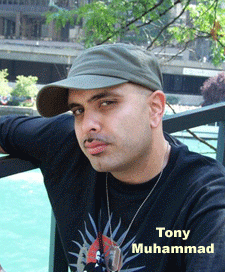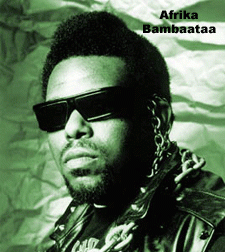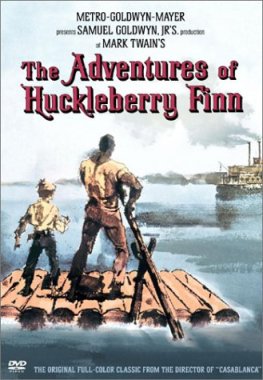Peace World….Good Morning and Good Day….
Many of you have asked us how you can help The RDACBX after our collective and space was violently evicted..well we have finally launched our IndieGoGo Campaign in which we are seeking to raise $50,000 to recover from our losses and trying to get into a new space…….check out the campaign here and please donate what you can and please spread the word!!!!!…
http://www.indiegogo.com/projects/i-am-rdac-bx?show_todos=true

Below RDAC BX is speaking about the violent eviction they endured
http://www.youtube.com/watch?v=LuQeAJCCDYA
This is one of my favorite songs and oldie but goodie from Rebel Diaz shot in Chile..
 Upon hearing about the Feds and NYPD coming down and violently evicting Rebel Diaz and the Artist Collective from an abandoned space in the South Bronx, that they painfully transformed into a first class community center is beyond angering. It’s beyond frustrating..These folks did everything we say we want the ‘youth’ in our community to do.. They did everything we say Hip Hop is supposed to represent.. They didn’t wait around for a savior, Rebel Diaz saved themselves.. They brought the community in who also saved themselves.
Upon hearing about the Feds and NYPD coming down and violently evicting Rebel Diaz and the Artist Collective from an abandoned space in the South Bronx, that they painfully transformed into a first class community center is beyond angering. It’s beyond frustrating..These folks did everything we say we want the ‘youth’ in our community to do.. They did everything we say Hip Hop is supposed to represent.. They didn’t wait around for a savior, Rebel Diaz saved themselves.. They brought the community in who also saved themselves. Instead of waiting around to be invited to yet another showcase or music convention that left them dissatisfied, RDACBX put on their own landmark convention South By South Bronx and invited the pioneers of Hip Hop to speak. The RDACBX is where they had former members of the Young Lords, Black Liberation Army and political prisoners speak to standing room only audiences about Black Brown unity… This space was home to countless book readings, movie screenings and epic showcases.
Instead of waiting around to be invited to yet another showcase or music convention that left them dissatisfied, RDACBX put on their own landmark convention South By South Bronx and invited the pioneers of Hip Hop to speak. The RDACBX is where they had former members of the Young Lords, Black Liberation Army and political prisoners speak to standing room only audiences about Black Brown unity… This space was home to countless book readings, movie screenings and epic showcases. However this time is different..a building is not the movement.. A building is not community.. It never was.. It’s the people and the love and respect they have for one another that makes this space so special.. Rebel Diaz will not go out or be shut down.. you best believe that.. We should all be aware of whats going on, support them in the best ways we can.. and continue to build and re-strengthen our respective local communities.
However this time is different..a building is not the movement.. A building is not community.. It never was.. It’s the people and the love and respect they have for one another that makes this space so special.. Rebel Diaz will not go out or be shut down.. you best believe that.. We should all be aware of whats going on, support them in the best ways we can.. and continue to build and re-strengthen our respective local communities. South Bronx community center Rebel Diaz Arts Collective (RDACBX) shut down by Federal marshals and NYPD. Rally to be held denouncing lockout and forced eviction.
South Bronx community center Rebel Diaz Arts Collective (RDACBX) shut down by Federal marshals and NYPD. Rally to be held denouncing lockout and forced eviction. Karen Louviere, 19, a past participant in RDACBX youth programs, expressed her disappointment at the violent shutdown of the space. “They came in with armed officers into what is supposed to be a safe space for the community. A space that has served as an alternative for young people in the area, helping develop their talents in a positive way.”
Karen Louviere, 19, a past participant in RDACBX youth programs, expressed her disappointment at the violent shutdown of the space. “They came in with armed officers into what is supposed to be a safe space for the community. A space that has served as an alternative for young people in the area, helping develop their talents in a positive way.”
 This past Monday, Spinderella of Salt-N-Pepa, Mike Shinoda of Linkin Park and myself among others, participated in a panel discussion at UCLA that focused on the business workings and current state of Hip Hop. Before we launched into Q&A from the audience all of us were asked ‘What CD we were listening to in our ride?’ The audience seemed a bit surprised when I mentioned that in my CD deck was the 1981 album ‘JuJu’ by new wave/punk act Siouxsie & the Banshees. Songs like ‘Spellbound, ‘Monitor’ and ‘Into the Light’ brought back fond memories. More importantly the whole early new wave/punk scene was a very much apart of my early Hip Hop experience.
This past Monday, Spinderella of Salt-N-Pepa, Mike Shinoda of Linkin Park and myself among others, participated in a panel discussion at UCLA that focused on the business workings and current state of Hip Hop. Before we launched into Q&A from the audience all of us were asked ‘What CD we were listening to in our ride?’ The audience seemed a bit surprised when I mentioned that in my CD deck was the 1981 album ‘JuJu’ by new wave/punk act Siouxsie & the Banshees. Songs like ‘Spellbound, ‘Monitor’ and ‘Into the Light’ brought back fond memories. More importantly the whole early new wave/punk scene was a very much apart of my early Hip Hop experience.



 It’s one sided in the sense that you have rock oriented outlets with a predominantly white audience embracing Hip Hop. Yes, you can tune into a radio station like KROQ and hear rap alongside the usual rock offerings and lastly we have all the mash up projects, with the most noticeable being Collision Course with Linkin Park and Jay-Z. However, you will not see similar attempts in many urban outlets that target African American audiences. Yes believe it or not groups like Linkin Park as popular as they are are still relatively unknown in many Black circles where BET and commercial radio are the main conduits to things outside the community. I’m not sure what needs to be done to change that or if it even needs to be changed.
It’s one sided in the sense that you have rock oriented outlets with a predominantly white audience embracing Hip Hop. Yes, you can tune into a radio station like KROQ and hear rap alongside the usual rock offerings and lastly we have all the mash up projects, with the most noticeable being Collision Course with Linkin Park and Jay-Z. However, you will not see similar attempts in many urban outlets that target African American audiences. Yes believe it or not groups like Linkin Park as popular as they are are still relatively unknown in many Black circles where BET and commercial radio are the main conduits to things outside the community. I’m not sure what needs to be done to change that or if it even needs to be changed.



 The marked end of The Mayan Calendar on December 21st, 2012 as noted in the KRS-One song Aztechnical does not mean that life on planet Earth itself is going to end any time soon due to cataclysmic events. But rather, just as many
The marked end of The Mayan Calendar on December 21st, 2012 as noted in the KRS-One song Aztechnical does not mean that life on planet Earth itself is going to end any time soon due to cataclysmic events. But rather, just as many  It is because of Unconditional Love for the people, that one of the most influential Founding Fathers of Hip Hop culture, Afrika Bambaataa, was able to end gang violence in The South Bronx in the early 1970s. It was gang violence that was leading to heightened levels of death among the youth. In a gradual process, after entering into Divine Knowledge that he had learned from different communities at the time, including The Nation of Islam, The Nation of Gods and Earth and The Moorish Science Temple. He utilized that knowledge to separate the darkness (or condition of gross ignorance) that lurked in his own mind and discovered the Divine Light that was buried within him the whole time of his own existence. From there, he summoned the Divine Forces within himself and all of the Forces outside of himself. They manifested themselves in the form of the gang members in the community, which he considered to be his family. He called for peace, and established it under the banner of the first Hip Hop activist organization called Universal Zulu Nation.
It is because of Unconditional Love for the people, that one of the most influential Founding Fathers of Hip Hop culture, Afrika Bambaataa, was able to end gang violence in The South Bronx in the early 1970s. It was gang violence that was leading to heightened levels of death among the youth. In a gradual process, after entering into Divine Knowledge that he had learned from different communities at the time, including The Nation of Islam, The Nation of Gods and Earth and The Moorish Science Temple. He utilized that knowledge to separate the darkness (or condition of gross ignorance) that lurked in his own mind and discovered the Divine Light that was buried within him the whole time of his own existence. From there, he summoned the Divine Forces within himself and all of the Forces outside of himself. They manifested themselves in the form of the gang members in the community, which he considered to be his family. He called for peace, and established it under the banner of the first Hip Hop activist organization called Universal Zulu Nation. “It is Afrika Bambaataa to whom named and called each entity of BBoys/BGirls/DJaying/MCs/Aerosol Writing and adding The Most important Knowledge as the main Element of Hip Hop Culture and Brother KRS One helped to add more, with a few other as Plus Elements to the main Key elements of Hip Hop Culture. No one else never used or thought of naming each entity of the Culture an Element or to say that this Movement that we all are doing is called Hip Hop Culture or to recognize it as a World Movement. The Birth of this movement is The Bronx, New York City, New York Republic, but Rap is as Ancient as The creation of Humans itself.”
“It is Afrika Bambaataa to whom named and called each entity of BBoys/BGirls/DJaying/MCs/Aerosol Writing and adding The Most important Knowledge as the main Element of Hip Hop Culture and Brother KRS One helped to add more, with a few other as Plus Elements to the main Key elements of Hip Hop Culture. No one else never used or thought of naming each entity of the Culture an Element or to say that this Movement that we all are doing is called Hip Hop Culture or to recognize it as a World Movement. The Birth of this movement is The Bronx, New York City, New York Republic, but Rap is as Ancient as The creation of Humans itself.” Last year during this time Rebel Diaz member G1 was hospitalized in NYC and couldn’t make The Thankstaking Concert in Milwaukee at the legendary bar -The Uptowner.
Last year during this time Rebel Diaz member G1 was hospitalized in NYC and couldn’t make The Thankstaking Concert in Milwaukee at the legendary bar -The Uptowner.


